 Condor: an NTSB / military technothriller (Miranda Chase) Format: ebook
Condor: an NTSB / military technothriller (Miranda Chase) Format: ebook Source: purchased from Amazon
Formats available: paperback, ebook, audiobook
Genres: action adventure, thriller
Series: Miranda Chase NTSB #3
Pages: 428
Published by Buchman Bookworks on March 7, 2020
Purchasing Info: Author's Website, Amazon, Barnes & Noble, Kobo, Bookshop.org
Goodreads
The Antonov AN-124 Ruslan “Condor”—the heavyweight champ among production cargo jets. Russian tanks, American firefighting helicopters, rescue submersibles, satellites, city-sized power transformers...the Condor hauls them all over the world.
But when one lifts a top-secret payload rated as too dangerous, the US government decides it must take action. Untraceable action. Call Delta Force? SEAL Team Six?
No. They call Miranda Chase, lead crash investigator for the National Transportation Safety Board to fake a crash. Miranda refuses, but the stakes grow higher and higher. Soon she may be too late to stop the new Cold War from becoming the final war.
My Review:
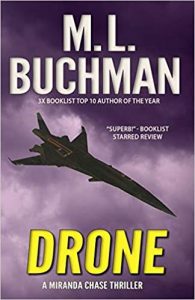 In this third book in the Miranda Chase NTSB series, the team has finally found the fifth man for its five-man band. And team leader Miranda Chase may have finally found somebody of her own who gets her for all the parts of who she is – laser-focused, single-minded, socially clueless, neuro-atypical and pure savant at figuring out what made a plane crash – no matter how much anyone – or everyone – attempts to hide the truth.
In this third book in the Miranda Chase NTSB series, the team has finally found the fifth man for its five-man band. And team leader Miranda Chase may have finally found somebody of her own who gets her for all the parts of who she is – laser-focused, single-minded, socially clueless, neuro-atypical and pure savant at figuring out what made a plane crash – no matter how much anyone – or everyone – attempts to hide the truth.
Whether they do that hiding before or after the crash she’s investigating hits the ground.
All of the books in this series have been named for the planes that have crashed – the planes that Miranda’s team has come to investigate. A Drone, a Thunderbolt and now a Condor – so far. And this one is no different in that start. But it is certainly different in the way that events play out.
And the story feels like it owes as much to Tom Clancy’s kind of spy games as it does to M.L. Buchman’s brand of military romance. In fact, it feels like the blend may be reaching an optimal mix for all kinds of combustion.
But first there’s a downed plane, a dead crew, a top secret and completely torched cargo, a Russian counter espionage agent and a CIA Director with designs on becoming the Second Lady of the U.S. – and eventually the First.
In the middle of it all, there’s Miranda Chase and her team, figuring out how and why the plane crashed in the U.S. – and how to make another one just like it crash in the middle of Russia – without ever giving the game away to anyone watching on either side of the deadly equation.
And without any members of her team getting bogged down – or taken out – by the weight of the baggage that they brought along for the ride.
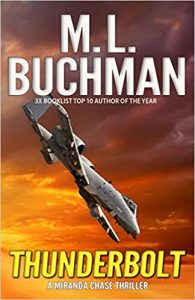 Escape Rating A: In this third book in Miranda Chase’s series, it really feels like the team is hitting its stride. They have really begun to gel as a unit, and as a consequence, the individuals that make up the team have begun to trust each other enough to reveal some of the trauma that’s hidden in their pasts.
Escape Rating A: In this third book in Miranda Chase’s series, it really feels like the team is hitting its stride. They have really begun to gel as a unit, and as a consequence, the individuals that make up the team have begun to trust each other enough to reveal some of the trauma that’s hidden in their pasts.
Miranda’s past, and its effects on her, have been part of the dynamic from the very beginning. She joined the NTSB and learned to analyze plane crashes because her parents died in one when she was a child. What she wasn’t aware of at the time, but certainly is now, is that her parents were CIA agents, and that their plane was sabotaged in a deliberate – and successful – attempt to take them out.
But we’re still learning about the rest of the team, just as they are learning about each other. As a consequence, the operation that provides the edge-of-the-suspense in this outing is wrapped around the team’s strongman – or in this case strongwoman – former Australian Special Forces operative Holly Harper.
Holly feels responsible for the deaths of her Australian team, as she was the only survivor of an operation that went so completely pear-shaped that even the pear would be outraged. Holly’s secondment to US NTSB was her way of putting her ghosts as far behind her as possible – literally half a world away.
She’s scared of being part of a “team” again, fearful that her bad luck has followed her across a very large ocean. But the operation that the team has been sucked into, faking the crash of a Russian military cargo transport in Russian airspace, is a job that requires all of the old skills that Holly hoped to never need again. But if she’s to save her new team, she’ll have to become the badass covert operative she left behind.
Because there’s an equally badass covert operative who is guaranteed to take out all the members of her new team with extreme prejudice. Unless Holly gets her first. Or unless that slimy new Director of the CIA plays them all.
 The operation, in all of its many hair-raising and nail-biting parts is a big callback to some of the wilder adventures of the Night Stalkers in Buchman’s first military romance series. That both Holly and surprisingly Miranda come out of this adventure with the possibility of romance in their own respective futures made this entry in the series feel closer to what I was expecting back when I first picked up Drone – a heart stopping action adventure story with a little bit (so far) of heart pounding romance on top.
The operation, in all of its many hair-raising and nail-biting parts is a big callback to some of the wilder adventures of the Night Stalkers in Buchman’s first military romance series. That both Holly and surprisingly Miranda come out of this adventure with the possibility of romance in their own respective futures made this entry in the series feel closer to what I was expecting back when I first picked up Drone – a heart stopping action adventure story with a little bit (so far) of heart pounding romance on top.
I can’t wait to see where Miranda and her team go – and which planes fall down in front of them – in the next book in this series, Ghostrider. I already have it on preorder!
I’ve enjoyed this author’s writing since I read his first military romance, The Night is Mine, back in 2012. He has written plenty of terrific books since then, ranging from military romance to action adventure romance to mysteries to SF to thrillers and some that straddle all the lines. I haven’t read them all – he’s been VERY prolific! – but I’ve read quite a few and enjoyed every one.
So, as part of my Blogo-Birthday Celebration, I’m giving one lucky reader the opportunity to climb aboard one of M.L. Buchman’s thrill-a-minute adventures. The winner of today’s giveaway will get their choice of any one of his books. Whoever wins is in for a real treat of a story!


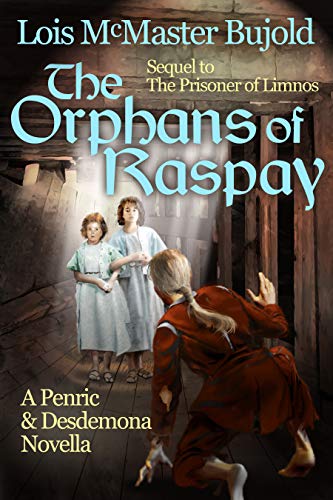 The Orphans of Raspay (Penric and Desdemona, #8) by
The Orphans of Raspay (Penric and Desdemona, #8) by 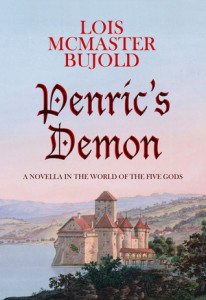 (That story is in
(That story is in 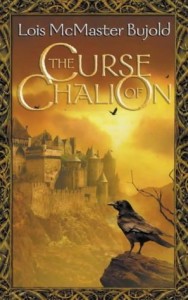 Escape Rating A: This series has been a comfort read for me, and right now we all need more comfort reading than usual, so here we are. I have kind of a hit-or-miss relationship with this author’s classic, famous space-opera
Escape Rating A: This series has been a comfort read for me, and right now we all need more comfort reading than usual, so here we are. I have kind of a hit-or-miss relationship with this author’s classic, famous space-opera 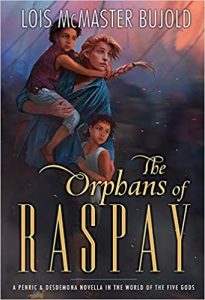 So he tries and fails regularly, although he tends to fail upwards, making a bit of progress each time. We hold our breath with him as he attempts yet another escape, and worry with him that he’s not going to get the girls to safety. Or that he’ll end up dead. Or both.
So he tries and fails regularly, although he tends to fail upwards, making a bit of progress each time. We hold our breath with him as he attempts yet another escape, and worry with him that he’s not going to get the girls to safety. Or that he’ll end up dead. Or both.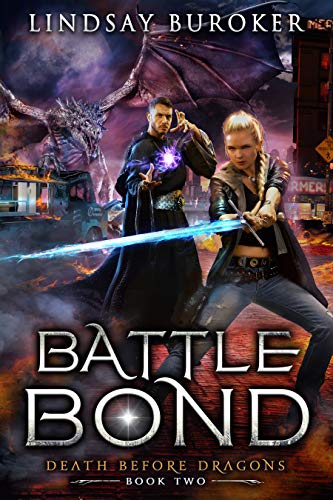 Battle Bond (Death Before Dragons #2) by
Battle Bond (Death Before Dragons #2) by 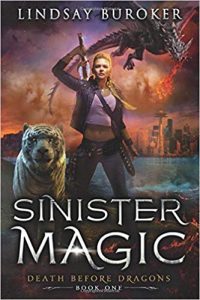 The story in Battle Bond picks up immediately after the ending of Sinister Magic. Val’s government boss is still recovering from the magical cancer that the dark elves infected her with, and Val is still driving the government loaner Jeep that she requisitioned after Zav threw her old Jeep into the upper branches of a very tall tree.
The story in Battle Bond picks up immediately after the ending of Sinister Magic. Val’s government boss is still recovering from the magical cancer that the dark elves infected her with, and Val is still driving the government loaner Jeep that she requisitioned after Zav threw her old Jeep into the upper branches of a very tall tree.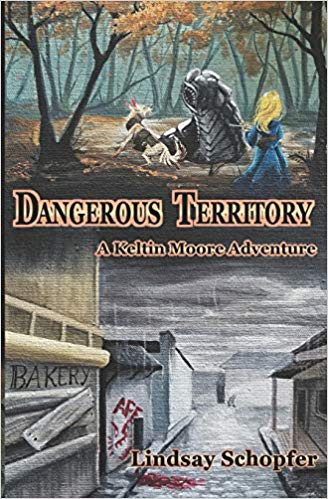 Dangerous Territory: A Keltin Moore Adventure by
Dangerous Territory: A Keltin Moore Adventure by 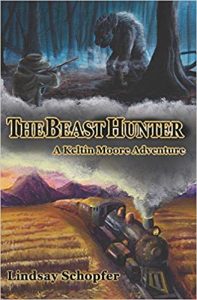 Three books in, after
Three books in, after 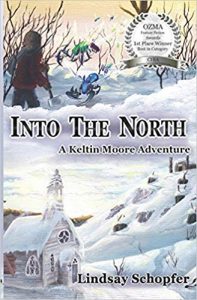 Escape Rating A-: There’s just something about this series that I eat up with a spoon. They are all relatively compact books, tell a compact story featuring an interesting and empathetic main character. I want to know what happens to Keltin next and I’m really sorry there’s no fourth book immediately available.
Escape Rating A-: There’s just something about this series that I eat up with a spoon. They are all relatively compact books, tell a compact story featuring an interesting and empathetic main character. I want to know what happens to Keltin next and I’m really sorry there’s no fourth book immediately available. Aunt Gertrude's Red Hot Christmas Beau (Christmas Belles #6) by
Aunt Gertrude's Red Hot Christmas Beau (Christmas Belles #6) by 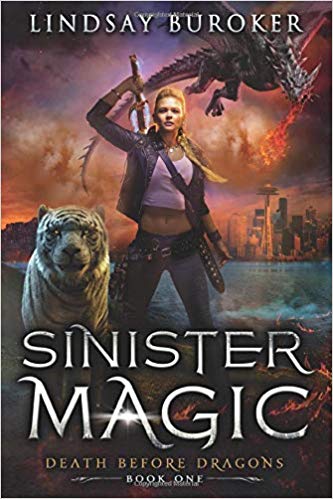 Sinister Magic: An Urban Fantasy Dragon Series (Death Before Dragons) by
Sinister Magic: An Urban Fantasy Dragon Series (Death Before Dragons) by 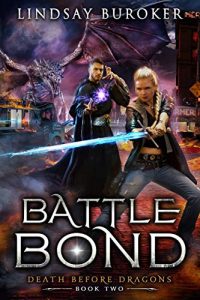 And then there’s that dragon. At this point, I’m kind of hoping that this is not being set up as an eventual romance. Although if it is the author is going to have to do a ton of heavy lifting to turn Zavryd into a character who could really be Val’s romantic partner. Not that he isn’t tall, dark and sexy when he’s not being a dragon, but because at the moment he sees all non-dragons as vermin to be ignored or eradicated. That’s a hell of a lousy place from which to start a relationship. So if it happens I hope it’s not until a whole lot of water has passed under that particular bridge.
And then there’s that dragon. At this point, I’m kind of hoping that this is not being set up as an eventual romance. Although if it is the author is going to have to do a ton of heavy lifting to turn Zavryd into a character who could really be Val’s romantic partner. Not that he isn’t tall, dark and sexy when he’s not being a dragon, but because at the moment he sees all non-dragons as vermin to be ignored or eradicated. That’s a hell of a lousy place from which to start a relationship. So if it happens I hope it’s not until a whole lot of water has passed under that particular bridge.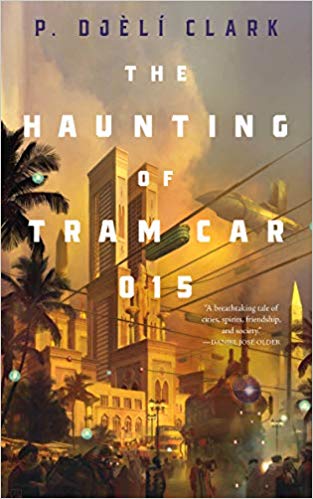 The Haunting of Tram Car 015 by
The Haunting of Tram Car 015 by 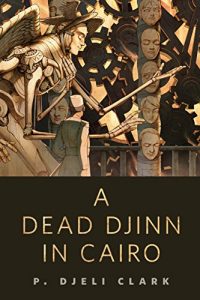 We only get hints of what the djinn are capable of in this story (I hope there’s more in the author’s previous work,
We only get hints of what the djinn are capable of in this story (I hope there’s more in the author’s previous work, 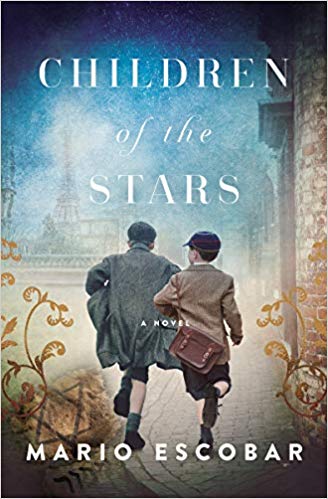 Children of the Stars by
Children of the Stars by 

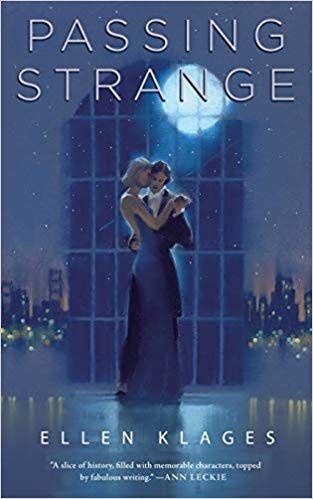 Passing Strange by
Passing Strange by 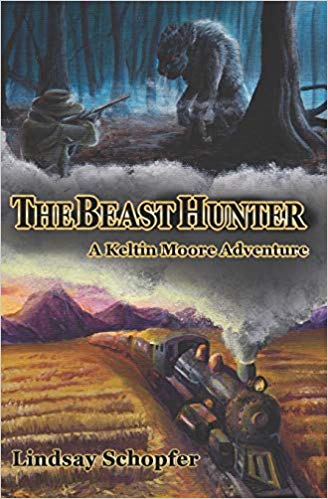 The Beast Hunter (The Adventures of Keltin Moore, #1) by
The Beast Hunter (The Adventures of Keltin Moore, #1) by 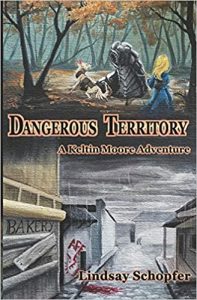 At every stage it seems as if the entire enterprise is on the verge of collapse or extermination – whether by the rampaging beasts or by internal strife. The reader spends the entire story on the edge of their seat, wondering who will live, who will die, and whether Keltin will emerge from this whole mess with more damage than can ever be healed.
At every stage it seems as if the entire enterprise is on the verge of collapse or extermination – whether by the rampaging beasts or by internal strife. The reader spends the entire story on the edge of their seat, wondering who will live, who will die, and whether Keltin will emerge from this whole mess with more damage than can ever be healed.